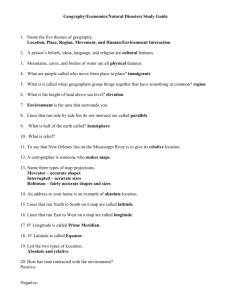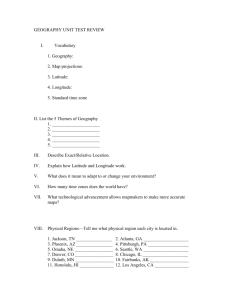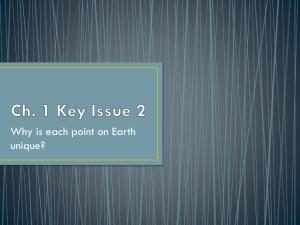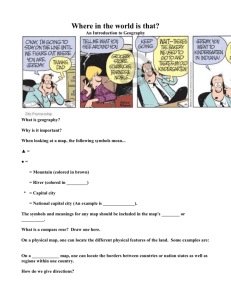Voab
advertisement
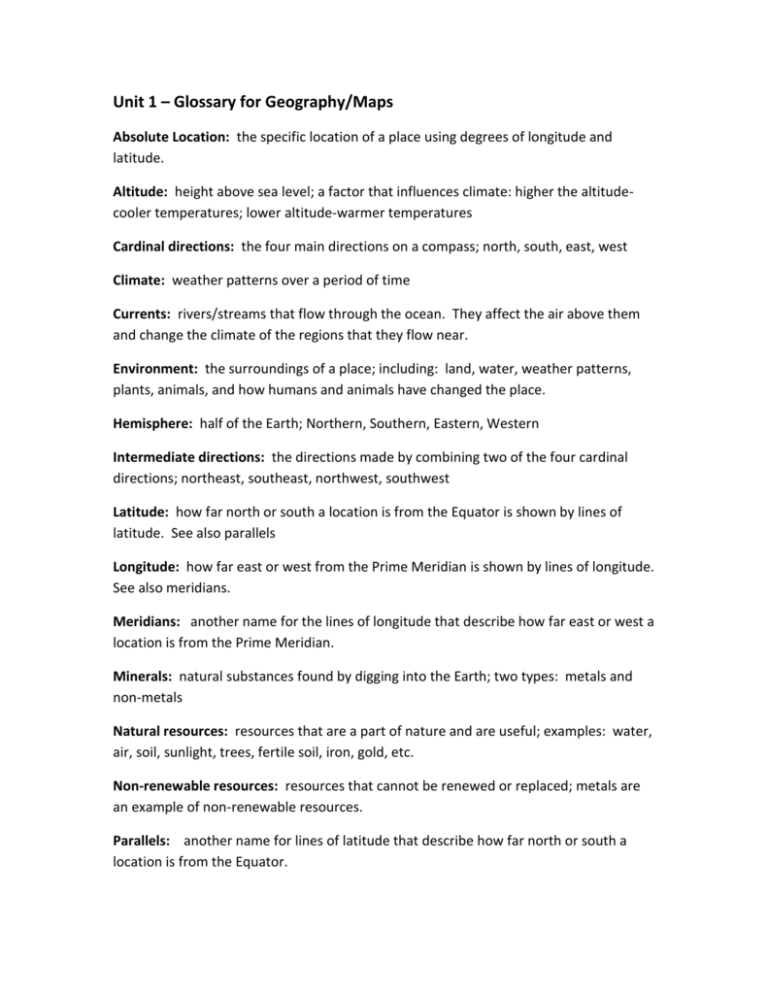
Unit 1 – Glossary for Geography/Maps Absolute Location: the specific location of a place using degrees of longitude and latitude. Altitude: height above sea level; a factor that influences climate: higher the altitudecooler temperatures; lower altitude-warmer temperatures Cardinal directions: the four main directions on a compass; north, south, east, west Climate: weather patterns over a period of time Currents: rivers/streams that flow through the ocean. They affect the air above them and change the climate of the regions that they flow near. Environment: the surroundings of a place; including: land, water, weather patterns, plants, animals, and how humans and animals have changed the place. Hemisphere: half of the Earth; Northern, Southern, Eastern, Western Intermediate directions: the directions made by combining two of the four cardinal directions; northeast, southeast, northwest, southwest Latitude: how far north or south a location is from the Equator is shown by lines of latitude. See also parallels Longitude: how far east or west from the Prime Meridian is shown by lines of longitude. See also meridians. Meridians: another name for the lines of longitude that describe how far east or west a location is from the Prime Meridian. Minerals: natural substances found by digging into the Earth; two types: metals and non-metals Natural resources: resources that are a part of nature and are useful; examples: water, air, soil, sunlight, trees, fertile soil, iron, gold, etc. Non-renewable resources: resources that cannot be renewed or replaced; metals are an example of non-renewable resources. Parallels: another name for lines of latitude that describe how far north or south a location is from the Equator. Precipitation: moisture that falls as rain, snow, sleet, or hail. Renewable resources: resources that can replace or rebuild themselves; examples: plants and animals Relative Location: the location of a place in relation to another location or place. Six Essential Elements of Geography: Geographers have divided the study of geography into the six essential elements of geography: the world in spatial terms, places and regions, physical systems, human systems, environment and society. Temperate: mild Temperate Climate: climate that is usually cold in the winter and warm in the summer (mild). Vegetation: plant life of a region

